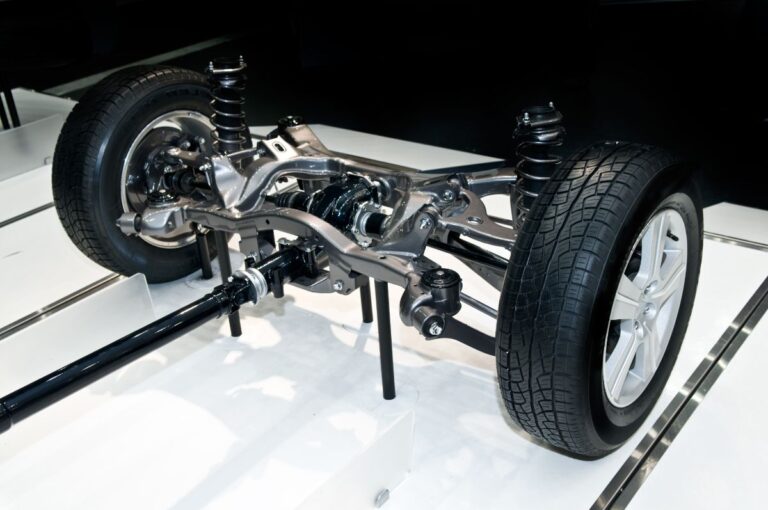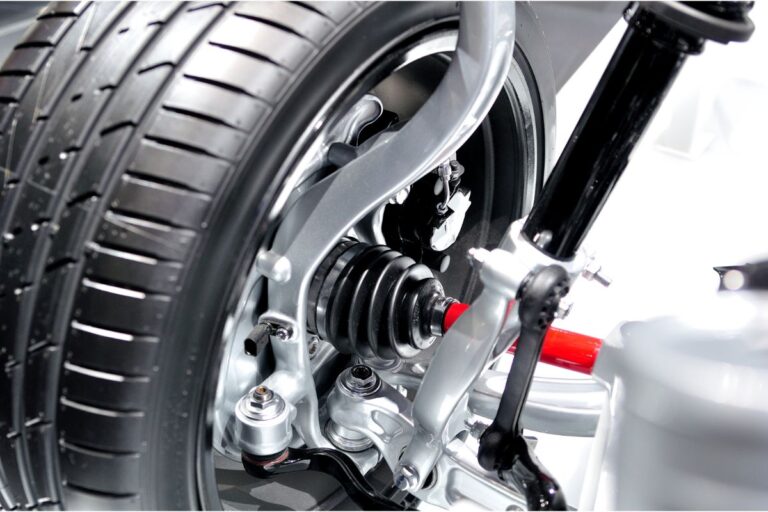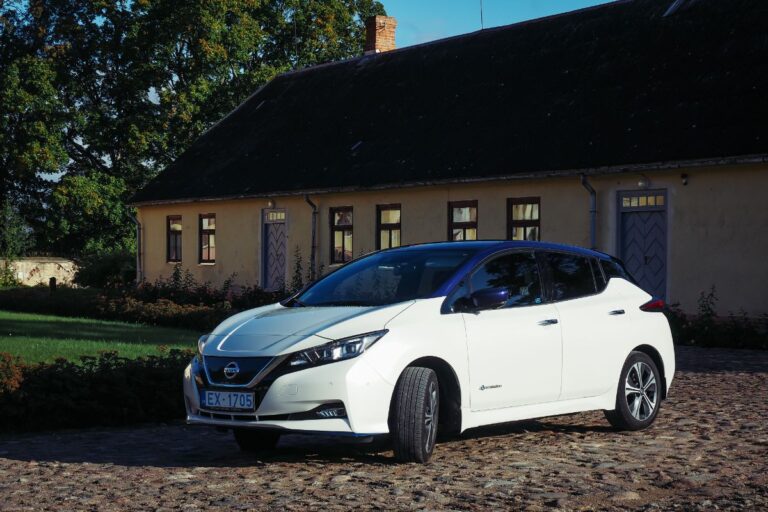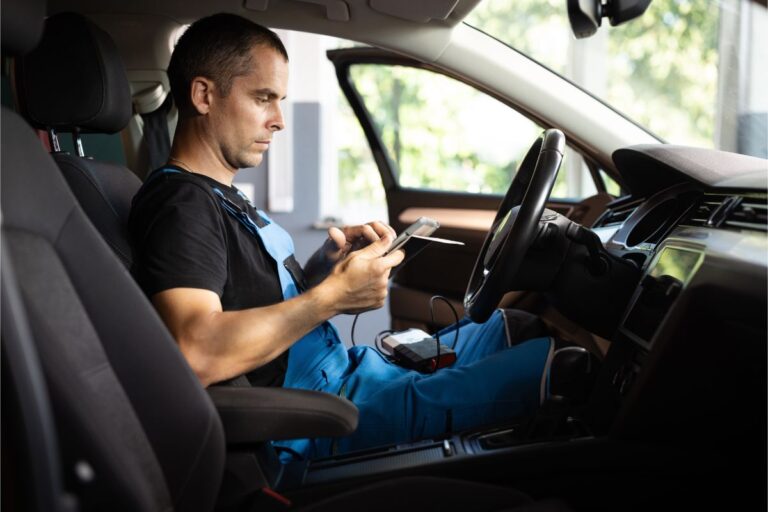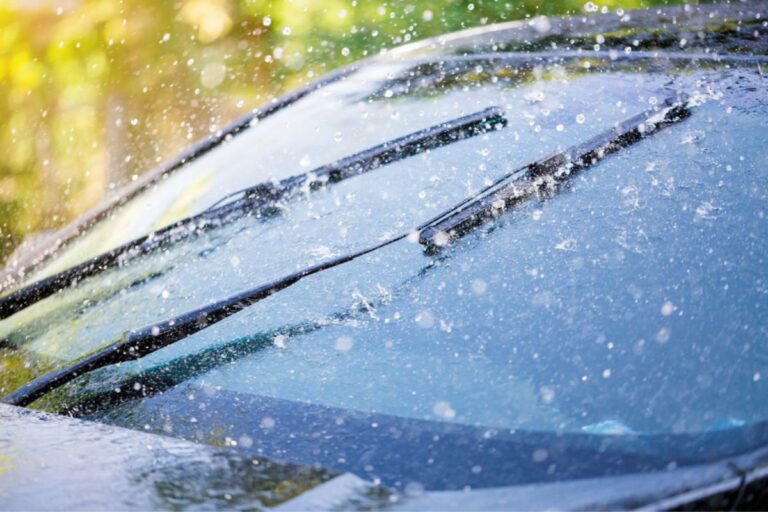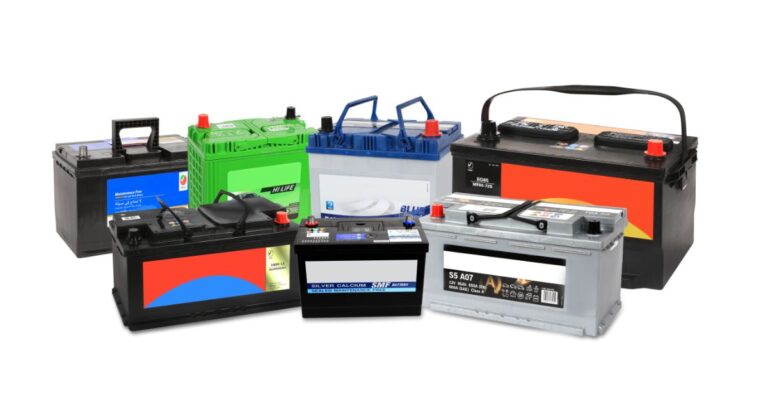
Driving with the parking brake on isn’t a great idea, but if you do it on accident you will not have to worry about it immediately affecting your car.
Over time, driving with the e-brake on will wear out the brakes and transmission, however, so it’s really not recommended.
The parking brake, emergency brake, or e-brake in a car can be a lifesaver in an emergency or just an extremely useful tool when you have to park on a hill.
But to paraphrase the comedian Mitch Hedburn, if you drive with the parking brake on, all it does is make your car smell really bad.
People get busy, and busy people tend to be distracted. If you recently made the mistake of driving with your e-brake on, you’re probably wondering how much damage you actually did to your car.
How Does a Parking Brake Work?

Parking brakes are connected to the rear wheels on a vehicle. In older models of cars, the brake was often called an emergency brake because it was designed to stop the car in the event that the front braking system was no longer working.
Stopping a car from behind does not give the driver much control, making this a way to stop a car that a person would only want to use if there were no other options.
Modern cars have much more complicated steering systems, making the emergency brake almost ineffective in a situation where an accident was imminent.
Today, the emergency brake is instead mostly used as a parking brake; essentially a redundant braking system that ensures a vehicle won’t roll down a hill. The parking brake works to reduce stress on the transmission, causing many manufacturers to recommend using it whenever a vehicle is parked.
In reality, however, it can be difficult to remember to use the parking brake every time you park a car, leading most people to hardly ever use the brake unless the car is on a steep incline.
Driving With Your E-Brake On

If you have recently drove your car while the parking brake was on, don’t panic. While this isn’t great for your brakes, you probably have not done anything to permanently damage the vehicle.
Essentially, the e-brake will put pressure on the back tires of the car, forcing your engine to work a lot harder to get the car to move forward.
This will have several long-term detrimental effects on your car, but it is very rare that driving with the e-brake turned on will cause something to break on the car immediately. In other words, doing this isn’t great for the car as a whole, but it won’t cause an immediate problem.
Wearing out the brake pads and wheels. Think of turning on the e-brake like driving around all day with the brake pedal pushed down. The immediate effect that this is going to have on your vehicle is that the brake pads will wear out much quicker than usual.
On cars that are front wheel drive this might not be such a big deal since the regular braking system will typically only affect the front tires of the vehicle, while the parking brake tends to act on the back wheels.
Keep in mind, however, that every car is designed a little differently, and this might not be the case in every vehicle.
Engine and transmission strain. In order to counteract the force of the brakes on the back wheels, the engine will have to work harder when you accelerate the car. This will put a lot of strain on the transmission, especially in an automatic car.
Most automatic transmissions are programmed to change gears as the car accelererates; part of the programming is knowing how much force is normally necessary to move the vehicle forward at the speed the driver wants to go.
Think of driving with the e-brake on as adding extra weight to the vehicle; the transmission will want to put the car into a particular gear to match the speed that is requested, but the extra weight forces the gears to grind together in order to push the car forward.
The end result is that the gears inside the transmission will wear out a lot faster. Gas mileage decrease. All that extra strain on the engine and transmission will cause your car to need more energy to move the vehicle forward.
That extra energy will come from burning gasoline at a higher rate. You’ll likely notice a sharp drop off in your fuel economy for trips that you drive with the emergency brake on.
How to Repair the Damage
If you made the mistake once or twice of driving your vehicle with the emergency brake turned on, realize that you may have caused some parts to wear out faster and be more careful in the future. There really isn’t a lot you can do to immediately repair the damage.
Unfortunately, if you have been driving around for a while like this, it’s very likely that you will need to replace some components on your vehicle much sooner than the owner’s manual calls for.
Most likely you’ll start by needing to replace the brake pads on the car. If the damage is really bad, it may also become necessary to replace a transmission much sooner than you had planned for.

